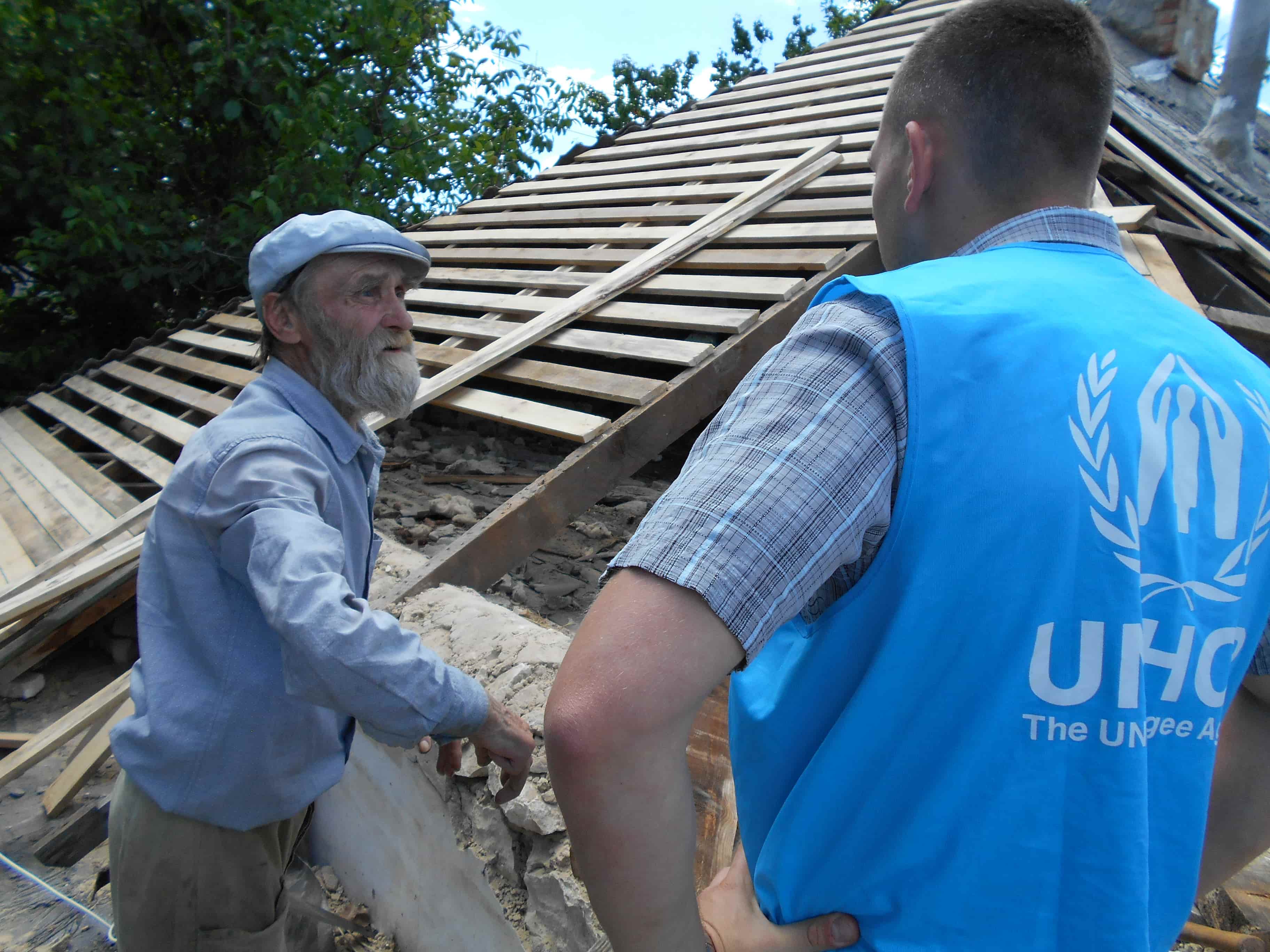UNHCR’s shelter activities provide assistance for two main areas of need. On the one hand, it seeks to provide durable solutions for displaced people and returnees. On the other hand, it addresses new emergency needs in areas near the line of contact.
UNHCR provides a variety of shelter assistance, ranging from light repairs to full reconstruction of both individual houses and multi-story apartment buildings. UNHCR thereby prevents arbitrary displacement and assures dignified accommodation for the most vulnerable families among the conflict-affected population and those who have voluntarily decided to return to their homes. In 2018, UNHCR continues to repair damaged homes on both sides of the lone of contact. UNHCR prepositions acute emergency shelter kits, comprising of tarpaulins and wooden battens. They are used for temporary house repairs as a part of the emergency assistance to conflict-affected or newly displaced households.
From 2015 to March 2018, UNHCR assisted 15,948 households with long-term repairs, around one third of them in NGCA, while 11,377 households received acute emergency shelter kits. There are currently around 4,000-6,000 conflict-affected households in need of shelter assistance. With the current backlog of assistance, the level of response capacity and the level of new damages per year, UNHCR projects that the needs in GCA will be covered by the end of 2019. In NGCA, it would take four to five more years to cover all the assistance needs of affected households.
In terms of advocacy, UNHCR provides guidance to Ukrainian authorities and development actors implementing social housing pilot projects. UNHCR actively advocates for IDPs’ access to social housing.
Find facts about the shelter cluster in Ukraine, its activities and its partners here

